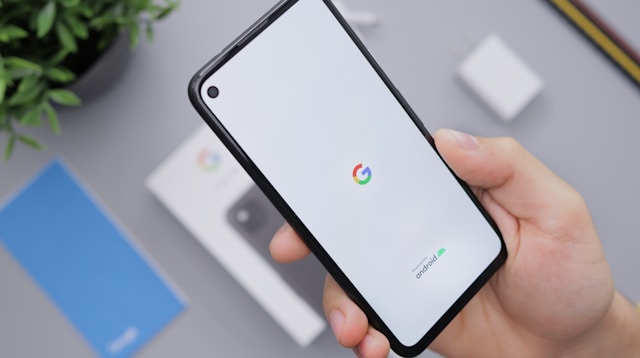Last Updated on July 17, 2024 by Richard Martin Linga
Mobile Optimization is essential in today’s world. More people use their phones to browse the internet. So, if your website is not optimized for mobile, you could lose many visitors. Therefore, Mobile Optimization is crucial for online success. An SEO specialist Philippines is a leader in mobile optimization. Thus, can help businesses improve their website performance on mobile devices. By doing so, it ensures that your site is user-friendly. Also, it ranks well on search engines.
Mobile Optimization ensures your website works well on smartphones and tablets can help you achieve this by conducting effective Keyword Research to understand your audience’s needs and improve user experience. Therefore, people are more likely to stay on your site and make a purchase. Keyword research is a key part of Mobile Optimization. It helps us understand what your audience is looking for. Also, by using the right keywords, we make sure your content is relevant and easy to find.
Benefits of Mobile Optimization for Your Business

Improved User Experience
Mobile Optimization makes your site easy to use on phones and tablets. For instance, users can navigate your site without trouble. This leads to a better user experience, so visitors stay longer and come back.
Higher Search Rankings
Google favors mobile-friendly sites. So, with Mobile Optimization, your site can rank higher in search results. In other words, more people can find your business online.
Increased Engagement
When your site is mobile-optimized, users engage more. They spend more time on your site and view more pages. Therefore, this can lead to more inquiries and sales.
Faster Load Times
Mobile Optimization speeds up your site. Faster load times mean less waiting for users. So, they are less likely to leave your site due to slow loading.
Better On-Page Optimization
Mobile Optimization works well with On-Page Optimization. It ensures your content is easy to read and navigate on mobile. This makes your site more effective and user-friendly.
Higher Conversion Rates
A mobile-optimized site converts better. For instance, users can easily find and buy products. So, this leads to more sales and a better return on investment.
Competitive Advantage
Many businesses still lack Mobile Optimization. By optimizing your site, you gain an edge over competitors. Therefore, you can attract more visitors and customers.
Enhanced Brand Image
A well-optimized mobile site reflects well on your brand. It shows that you care about your users’ experience. So, it helps build trust and loyalty.
Key Elements of Mobile Optimization

Responsive Design for Mobile Optimization
Responsive design ensures your website adapts seamlessly to any screen size, enhancing user experience across devices like phones and tablets. This approach improves website accessibility and navigation, crucial for retaining mobile traffic.
Fast Load Times Enhance Mobile Optimization
Optimizing load times is key to keeping visitors engaged. Mobile users expect quick page loads, making image optimization and code reduction essential for faster performance. Prioritizing speed helps improve core web vitals and boosts overall mobile SEO.
Browser Testing Ensures Compatibility
Thorough browser testing guarantees your website functions correctly across various browsers and devices. This ensures a consistent user experience and prevents potential issues that could affect mobile traffic and site usability.
Core Web Vitals Impact Mobile SEO
Core Web Vitals, such as page loading speed and interactivity, directly influence your site’s mobile optimization. Focusing on these metrics improves user experience and enhances your site’s performance in mobile search rankings.
Success Stories Highlight Mobile Design Achievements
Sharing success stories of improved mobile design and performance demonstrates your site’s capability to attract and retain mobile traffic. These stories showcase how effective mobile optimization can lead to a competitive advantage.
Mobile Video Best Practices Engage Users
Implementing mobile video best practices, like optimizing for small screens and fast loading times, ensures engaging multimedia content that enhances user interaction and boosts mobile SEO.
Mobile Traffic Drives Online Presence
With increasing mobile usage, optimizing your site for mobile traffic is crucial. It ensures broader reach and accessibility, enhancing your overall online presence and visibility in local SEO rankings.
Design for Mobile Ensures User Engagement
Tailoring your design for mobile devices improves user engagement and satisfaction. A mobile-friendly layout enhances usability and encourages visitors to explore your site, contributing to a positive user experience.
Competitive Advantage through Mobile Optimization
Effective mobile optimization gives your site a competitive edge in mobile search results. It attracts more mobile traffic, improves user retention, and boosts conversions, ultimately enhancing your online competitiveness.
Local SEO Benefits from Mobile-Friendly Design
A mobile-responsive website positively impacts local SEO efforts by improving user experience and accessibility. It helps local businesses attract nearby customers searching on mobile devices, driving foot traffic and conversions.
Touch-Friendly Navigation
Mobile users rely on touch to navigate. Buttons and links should be large enough to tap easily. Also, menus should be simple and easy to use. This improves the overall user experience. Therefore, touch-friendly navigation is a key part of Mobile Optimization.
Readable Text
Text should be large enough to read without zooming in. Use a simple font and proper spacing. This makes your content easy to read on small screens. So, focus on readability to enhance Mobile Optimization.
Minimal Pop-Ups
Pop-ups can be annoying on mobile devices. They often cover the screen and disrupt the user experience. Therefore, minimizing or eliminating pop-ups can enhance Mobile Optimization. Instead, use simpler ways to engage users.
Quality Content
Quality content is crucial for Mobile Optimization. Your content should be relevant and easy to understand. Also, it should be formatted for mobile reading. Use short paragraphs and bullet points. This makes it easier for users to consume information. So, always focus on quality content.
Optimized Images
Images should be optimized for mobile devices. Large images can slow down your site. Therefore, compress images without losing quality. This helps your site load faster and improves Mobile Optimization.
Mobile-Friendly Design

Creating a Mobile-Friendly Design
Mobile-friendly design focuses on making your website easy to use on phones and tablets. In other words, it ensures users can navigate your site without problems. Here are some principles of creating a mobile-friendly design.
Simplified Layout
- Keep it simple: A cluttered design can confuse users. So, use clean lines and plenty of white space.
- Easy navigation: Simplify the menu and layout to help users find what they need quickly.
- Focus on essentials: Remove unnecessary elements that don’t add value.
Readable Fonts
- Use large fonts: Small text is hard to read on mobile screens. So, choose a font size that is easy to read.
- Simple fonts: Use clear, simple fonts that are not too fancy. This makes reading easier.
Easy Navigation
- Simple menus: Use a simple menu that is easy to access.
- Large buttons and links: Make buttons and links large enough to tap easily. This helps users move around your site without frustration.
- Clear structure: Organize content so users can find what they need quickly.
Fast Load Times
- Optimize images: Large images can slow down your site. So, compress images without losing quality.
- Reduce code: Remove unnecessary code to make your site load faster.
- Speed matters: Mobile users do not like waiting for pages to load.
Touch-Friendly Elements
- Large buttons: Make buttons large enough to tap without mistakes.
- Space between links: Ensure there is enough space between links and buttons. This makes it easier for users to interact with your site.
- Responsive touch areas: Design touch areas to be responsive and user-friendly.
Quality Content
- Easy to read: Use short paragraphs and bullet points to break up text.
- Organize with headings: Use headings to organize content. This keeps users engaged and improves Mobile Optimization.
- Relevant information: Provide content that is useful and relevant to your users.
Effective Link Building
- Easy to tap: Use links that are easy to tap and navigate.
- Useful links: Ensure links lead to relevant and useful content. This enhances user experience and helps with search engine rankings.
- Clear calls to action: Use links to guide users to take actions, like signing up for a newsletter or making a purchase.
Responsive Web Design for Mobile Optimization

Responsive web design means your website layout changes based on the device being used. So, whether a visitor uses a phone, tablet, or computer, your site will adjust to fit the screen, enhancing user experience and supporting effective link building strategies across all platforms. This makes it easier for users to navigate and read your content.
Benefits of Responsive Web Design
- Better User Experience: A responsive design improves the user experience. For instance, users don’t need to zoom in or scroll sideways to see your content. Therefore, it makes your site more user-friendly.
- Improves SEO: Responsive web design helps with Mobile Optimization and Local SEO. Google favors mobile-friendly sites. So, a responsive design can help your site rank higher in search results.
- Cost-Effective: It’s cheaper to maintain one site that works on all devices than having separate sites for mobile and desktop. Therefore, responsive design saves money and effort.
Key Elements of Responsive Web Design
- Flexible Layouts: Use flexible grids that adjust to different screen sizes. This ensures your content looks good on any device. So, your site will always provide a good user experience.
- Responsive Images: Images should also adjust based on the screen size. Use CSS to resize images for different devices. This helps your site load faster and looks better.
- Media Queries: Use media queries in your CSS to apply different styles for different devices. For instance, you can change font sizes, margins, and padding based on the screen size. This ensures your site is easy to read and navigate.
How Responsive Web Design Enhances Mobile Optimization
Responsive web design makes sure your site works well on mobile devices. This is crucial for Mobile Optimization. So, by making your site responsive, you improve user experience and boost your search rankings.
Implementing Responsive Web Design
- Start with a Mobile-First Approach: Design your site for mobile devices first. After that, adjust it for larger screens. This ensures your site works well on all devices.
- Use Simple Navigation: Keep your navigation simple and easy to use. This helps users find what they need quickly. So, it improves their experience on your site.
- Optimize Your Content: Make sure your content is easy to read on small screens. Use short paragraphs and bullet points. Also, ensure your text is large enough to read without zooming in.
Accelerated Mobile Pages (AMP) for Better Mobile Performance

Accelerated Mobile Pages (AMP)
AMP is a way to make web pages load quickly on mobile devices. It does this by using a simpler version of HTML and other web technologies. In other words, AMP makes web pages leaner. Therefore, they load much faster.
Benefits of AMP
- Faster Load Times: AMP pages load almost instantly. This means users spend less time waiting for content. So, faster load times make users happier and keep them on your site.
- Improved Mobile Optimization: AMP helps your site work better on mobile devices. This is key for Mobile Optimization. Also, a faster site can help your site rank higher in search results.
- Better User Engagement: When pages load quickly, users are more likely to stay and interact with your content. For instance, they may read more articles or browse more products. Therefore, AMP can lead to more engagement.
Key Features of AMP
- Simplified HTML: AMP uses a simpler version of HTML. This helps pages load faster by cutting out unnecessary parts. So, your site delivers content quickly.
- Lazy Loading: AMP supports lazy loading, which means images and other elements load only when needed. This reduces the initial load time. So, pages appear faster to users.
- Prioritized Content: AMP loads the most important content first. For instance, text and images load first, while ads and other elements load later. This means users see the important parts of your site first.
Implementing AMP for Mobile Optimization
- Start with Key Pages: Begin by converting your most important pages to AMP. These could be your homepage, key articles, or product pages. So, focus on the pages that get the most traffic first.
- Use AMP HTML: Follow the AMP HTML guidelines to create AMP pages. This includes using specific tags and attributes designed for AMP. In other words, make sure your pages meet the AMP rules.
- Validate AMP Pages: Use the AMP validator to check your pages for errors. This tool makes sure your pages meet AMP standards. Therefore, your pages will load correctly.
AMP and Technical SEO
AMP is also good for Technical SEO. It improves the technical parts of your site, like load time and mobile performance. So, using AMP can help your site’s overall SEO.
- Boosts Search Rankings: Google likes fast-loading pages. So, AMP can help your site rank higher in search results. In other words, a faster site is more likely to appear at the top.
- Reduces Bounce Rates: Faster pages keep users on your site longer. Therefore, AMP can help lower bounce rates, which is good for SEO.
Mobile Page Speed

Optimizing Mobile Page Speed
Mobile page speed is important because users expect quick access to information. Slow-loading pages can frustrate users and make them leave your site. Therefore, optimizing mobile page speed is essential.
- Compress Images: Large images can slow down your site. So, compress images to reduce their size without losing quality. This helps your site load faster and improves Mobile Optimization.
- Minimize Code: Remove unnecessary code from your site. This includes extra spaces, line breaks, and unused CSS or JavaScript. In other words, clean code loads faster and enhances mobile page speed.
- Use Browser Caching: Browser caching stores static files on users’ devices. This means users don’t have to download the same files every time they visit your site. So, enabling caching can speed up your site.
- Optimize Server Response Time: Slow server response times can delay page loading. Therefore, choose a reliable hosting provider and optimize your server settings. This can improve your site’s speed.
- Enable Compression: Use Gzip compression to reduce the size of your HTML, CSS, and JavaScript files. This makes your site load faster by sending smaller files to users’ devices.
- Reduce Redirects: Redirects can slow down page loading. Each redirect creates an extra HTTP request. So, minimize the number of redirects on your site to improve mobile page speed.
Impact on User Experience and SEO
Optimizing mobile page speed greatly impacts user experience and SEO. Fast-loading pages keep users happy. For instance, they are more likely to stay on your site and engage with your content.
- Better User Experience: Users expect fast-loading pages. Therefore, a quick site makes users more likely to stay and interact with your content. This leads to lower bounce rates and higher engagement.
- Improved SEO: Google considers page speed in its ranking algorithm. So, a faster site can help improve your search engine rankings. In other words, optimizing mobile page speed can make your site more visible to users.
- Higher Conversion Rates: Fast-loading pages can lead to higher conversion rates. Users are more likely to make a purchase or sign up for a service if your site loads quickly. Therefore, optimizing page speed can boost your sales and leads.
- Enhanced Web Analytics: Faster pages provide more accurate web analytics data. Slow-loading pages can cause tracking issues. So, optimizing page speed ensures your analytics data is reliable.
Tools for Mobile Optimization

Google’s Mobile-Friendly Test
Google’s Mobile-Friendly Test checks if your site is mobile-friendly. It provides a quick analysis and suggests improvements. So, you can easily find and fix issues.
PageSpeed Insights
PageSpeed Insights by Google checks your site’s speed on both mobile and desktop. It gives detailed reports on performance and suggests ways to improve loading times. Therefore, it is key for enhancing Mobile Optimization.
Google Search Console
Google Search Console helps you monitor and keep your site’s presence in Google Search results. It gives insights into mobile usability and performance. So, you can make sure your site is optimized for mobile users.
GTmetrix
GTmetrix checks page speed and performance. It offers detailed reports and clear tips. Therefore, you can use it to improve your site’s loading times and Mobile Optimization.
Lighthouse
Lighthouse is an open-source tool by Google. It audits your site for performance, accessibility, and SEO. It provides clear reports and tips for improvement. So, it’s great for enhancing your site’s Mobile Optimization.
SEMrush
SEMrush is a full SEO tool that includes features for mobile optimization. It offers insights into your site’s mobile performance and gives tips. In addition, it helps with reporting & analysis to track improvements.
WebPageTest
WebPageTest lets you run speed tests from many locations and browsers. It provides in-depth performance reports. Therefore, you can find and fix issues affecting your mobile site’s speed.
Screaming Frog
Screaming Frog is a website crawler that helps find technical issues. It can find problems related to mobile optimization, like broken links and duplicate content. So, it is useful for keeping a well-optimized mobile site.
Hotjar
Hotjar provides heatmaps and behavior analytics. It shows how users interact with your site on mobile devices. This insight helps you make smart decisions to improve Mobile Optimization.
Google Analytics
Google Analytics is important for tracking your site’s performance. It gives data on mobile traffic, user behavior, and site performance. Therefore, it is key for ongoing reporting & analysis.
Conclusion
In this article, I discussed the key elements of Mobile Optimization. I looked at the importance of having a mobile-friendly design and the role of tools in improving site performance. Mobile Optimization makes your site easy to use on all devices. For instance, responsive design ensures your site looks good on both phones and tablets. Therefore, users can navigate your site easily and find what they need.
SEO Specialist Philippines can help you achieve excellent Mobile Optimization. Our expertise ensures your site performs well on all devices. In other words, I make sure your site is user-friendly and ranks higher in search results. So, let us help you with your Mobile Optimization needs. By focusing on these strategies, you can boost your site’s visibility and performance.
FAQs
What is Mobile Optimization?
Mobile optimization means making sure your website works well and looks good on phones and tablets.
Why is Mobile Optimization Important?
It’s crucial because many people use their phones to browse websites. If your site isn’t good on mobile, users might have a bad experience.
How Does Mobile Optimization Work?
It involves adjusting your site’s design and code so it works better on smaller screens and loads faster on phones and tablets.
What Are the Benefits of Mobile Optimization?
It improves how users see your site, helps your site show up higher in Google, and makes more people do what you want on your site.
Is Mobile Optimization Different from Responsive Design?
Yes, but they’re related. Responsive design makes your site adjust to any screen size, which is part of making it good on mobile.
Can I Make My Site Good on Mobile by Myself?
Yes, if you use themes or plugins that are good for mobile, especially if your site uses WordPress.
What Tools Can Help with Mobile Optimization?
Tools like Google’s Mobile-Friendly Test and PageSpeed Insights can check your site and give you ideas on how to make it better.
How Can I Check if My Site is Good on Mobile?
You can look at your site on your phone, or use tools online that check how your site looks and works on phones and tablets.
Should I Make My Site Good on Mobile for Google?
Definitely. Google likes sites that work well on phones, so it can help your site show up better in search results.
What Are Some Mistakes to Avoid with Mobile Optimization?
Don’t use big files that make your site slow, or designs that are too complicated for phones. Also, avoid pop-ups that bother users.
